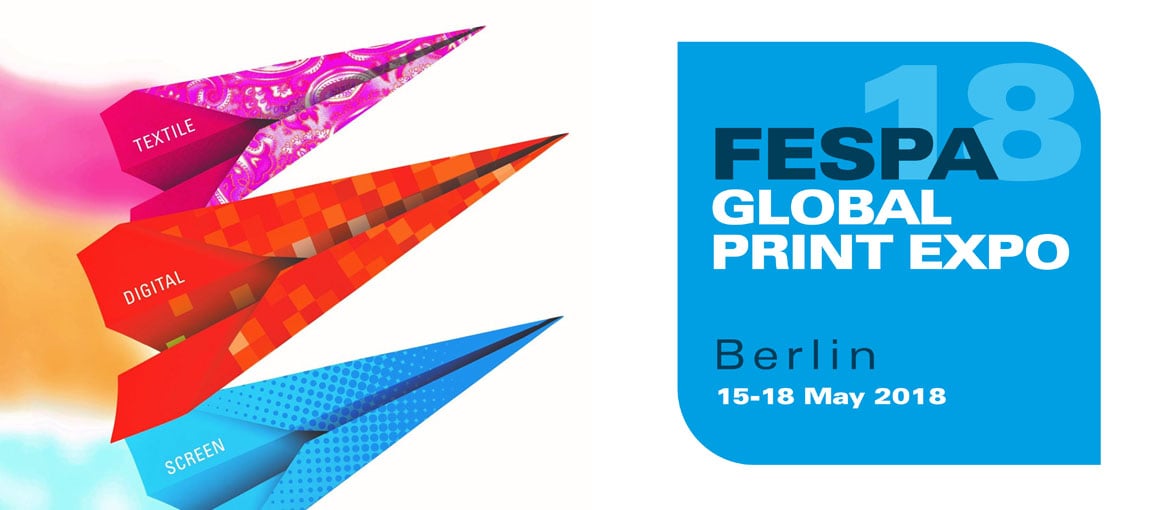FESPA is the largest trade fair in Europe for professionals in the large-format digital printing, screen printing and textile printing sector, and is the perfect place to discover cutting-edge technologies and new market opportunities. More than 18,000 visitors, comprising printers, print service providers, signage creators, interior and fashion designers, clothing companies and graphic design studios, come every year from all over Europe to discover the solutions and products presented by over 700 exhibitors.
Pixartprinting decided to take part in this year’s event in Berlin with its own display area, where it showcased the dedicated services the company offers to printing professionals. It also provided them with sample kits, so they could admire the quality of its printing and experience first-hand the wide range of materials it offers: synthetic fabrics, PVC, vinyl and rigid materials such as aluminium, Foamex® and Plexiglas®. The firm’s roll labels, with all the new features added to the catalogue in recent months, including gold and silver coatings, were also on display.

Attending the event is like a breath of fresh air, thanks to the innovative products and interesting presentations on the latest trends in the printing industry. Here are the most striking new ideas we uncovered at FESPA 2018.
Digital Corrugated Experience
One of the features introduced this year was the Digital Corrugated Experience, a display area highlighting the financial benefits of digital printing onto corrugated cardboard to create various types of packaging and display units, and the competitive advantage that can be gained from doing so. The event was aimed at print service providers and producers of boxes and packaging, who were able to analyse the entire printing process and explore the various elements involved, from file management and substrates selection to the choice of ink, printing technologies and finishings.
Conferences and debates featuring experts from companies such as HP, SunAutomation, ESKO and Swanlin were held alongside practical demonstrations, in which the audience could compare A1 sheets produced using different printing techniques, allowing them to choose the one that best suited their needs.
According to research by Smithers Pira, corrugated cardboard already makes up 31% of the packaging market, but thanks to the digital revolution it is destined to grow even more, becoming a key product in the packaging sector.
Print Make Wear
FESPA 2018 also saw the launch of Print Make Wear, a real-time production environment that aims to simulate the entire digital printing and screen printing process in the fashion sector, from the initial design through to presenting the finished garments on the catwalks.
Famous designers, textile producers and major brand owners were on hand to illustrate each phase of the fast-fashion production process, with the ultimate aim of sharing knowledge, exploring new opportunities and devising a more sustainable value chain for the clothing industry.
The event also revealed the latest innovations in smart textiles, which are opening up innovative applications in fashion design and, when combined with the latest digital technology, are creating interesting opportunities for fashion designers and brands.

New products
We discovered a huge number of new products at the trade show, and some of them really took us by surprise.
Canon presented a completely robotised flatbed print-and-cut workflow, demonstrating the incredible progress the company has made in automating this process using technology provided by its partner Rolan Robotics. This solution allows seamless and unattended printing on a flatbed printer, suitable for a range of applications with high productivity levels.
At the Canon stand we also witnessed the creation of the Elemental advertising campaign, featuring three different environments: the home, the shop and the street. The various means of communication set in different contexts clearly showed the versatility of digital printing in terms of its applications, making it an essential asset for any brand that wants to promote its products or services.
Another company presenting the latest in wide-format printing was HP, with the launch of the Latex R2000 printer, the first hybrid solution for rigid and flexible sign and display printing in a single device. The HP Latex water-based inks used by the platform produce unprecedented print quality and colour performance.
Finally, the Fenix Digital Group unveiled the Veika Dimensor S, the only technology in the world for environmentally-friendly digital printing of 3D wallpaper. This new printer, which won the EDP Award in the Wallpaper Solution category at the event, opens up new, as-yet-unexplored possibilities in the interior design and customised wallpaper sectors.

